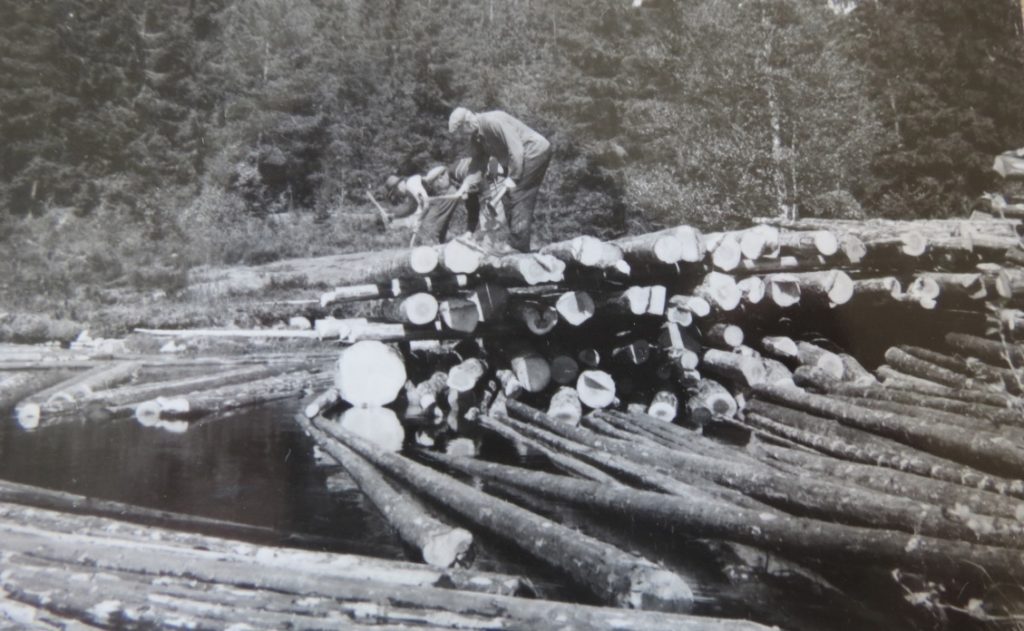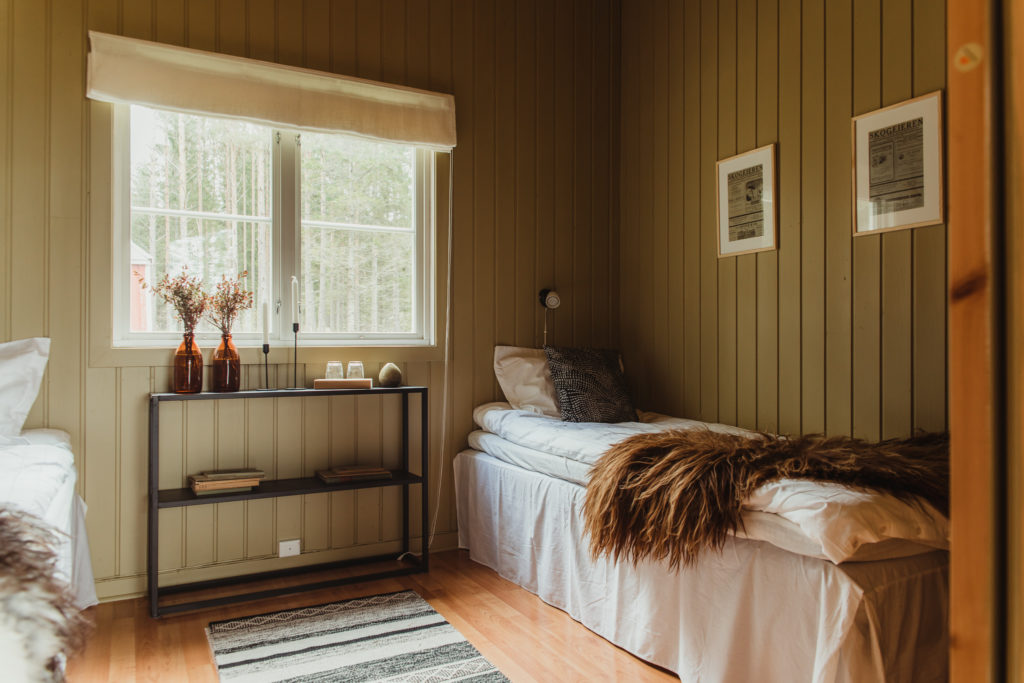Forest workers - the work iron of the forest

“The forest was buzzing with life”, my grandmother once said. The buzzing she was reffering to, was the forest workers in every corner. These were hard-working people, and the forest was their workplace.
The forest workers lived either all or part of the year in the forest. Most of the forest workers lived on small farms and places in the areas around the watercourses. In the autumn and winter, they harvested timber for the forest owners, and this was also the case at Hafsrød. With horses and sleighs, hand saws and axes, they harvested from the abundance of the forest which was transported to sawmills and further use. At Hafsrød in 1959, there were as many as 17 horses, which ensured that the timber was transported to where it was floated further down the watercourses.
Spring was something most forest workers looked forward to, because then it was timber floating season. This was the highlight of the year! The guys met each other and had a lot of fun. Although the timber floating season was something they looked forward to, it was also hard work.

To get a sense of how hard this work was, my father told me the following about their lives:
I have been told by someone who was involved in this work that it was a very tiring job. In the 1880s, the workers had to meet at an agreed location, whether it was 1 or 5 km from the nearest road, at 05.00 am in the morning. The daily wage was NOK 1.07 and the work lasted until late in the evening. In the 1890s, the meeting time at the same place was postponed to 06.00 am and the daily wage was raised to NOK 1.10. Each man was given a quarter of a roll of tobacco, and those who didn't smoke were given NOK 0.40 instead. There were also women who had to walk along the watercourse, about 2 km, to keep the guys with coffee. On this stretch there were approx. 45 men.
Fritz Anker-Rasch
When work was over, the journey carried back to the cabins. With such demanding work, the forest workers needed energy-rich food. With a calorie consumption of well over 6000 kcal every day, we can understand that this was hard work. No wonder the same people became among the best skiers in Norway, being as fit as they were. Norwegian ski king Lauritz Bergendahl was a forest worker during the winter like many other skiers at the time. At Hafsrød we had our own Halvdan Engerbakk, who at the age of 50 won Femsjøen around with cross country skis.
To endure the hard work, the forest workers ordered their weekly supply. Pork was ordered in large quantities, in addition to yeast, sugar, dairy butter, tobacco and “fyr” (matches). The sheet of paper with their orders where given to my grandmother, and she called in the orders to the store. Everyone needed their weekly delivery, in addition to food for the horses, where these were used.
On Fridays, it was time for goods to be delivered to the cabins. The joy was great among the forest workers when the delivery truck arrived, and perhaps just as great for those who came to deliever them.

A new era in the making
From old documents we can see that as many as 16 people were employed at Hafsrød in 1958. In the time ahead, major changes took place in Norway, among other things because the oil was discovered and the standard of living of the average Norwegian increased markedly. Wages rose, and provoked big changes in forestry as well, which had to become more efficient in order to remain profitable. Timber floating was replaced with timber trucks, and the hand saw and ax were replaced with machine harvesters. The need for manual work was therefore reduced, and people looked for opportunities elsewhere. In 1973/74, the last timber floating was carried out, and an era on Hafsrød was thus over.
The changes led to the forest cabins and small farms being vacated over time – but only for a short time. The forest became a joy for many others, who used the cabins as holiday homes. Many of the cabins at Hafsrød are still there, although with some adjustments. Now our guests are invited in to get a small glimpse of what it was like to live as a forest worker – out there in the woods.


